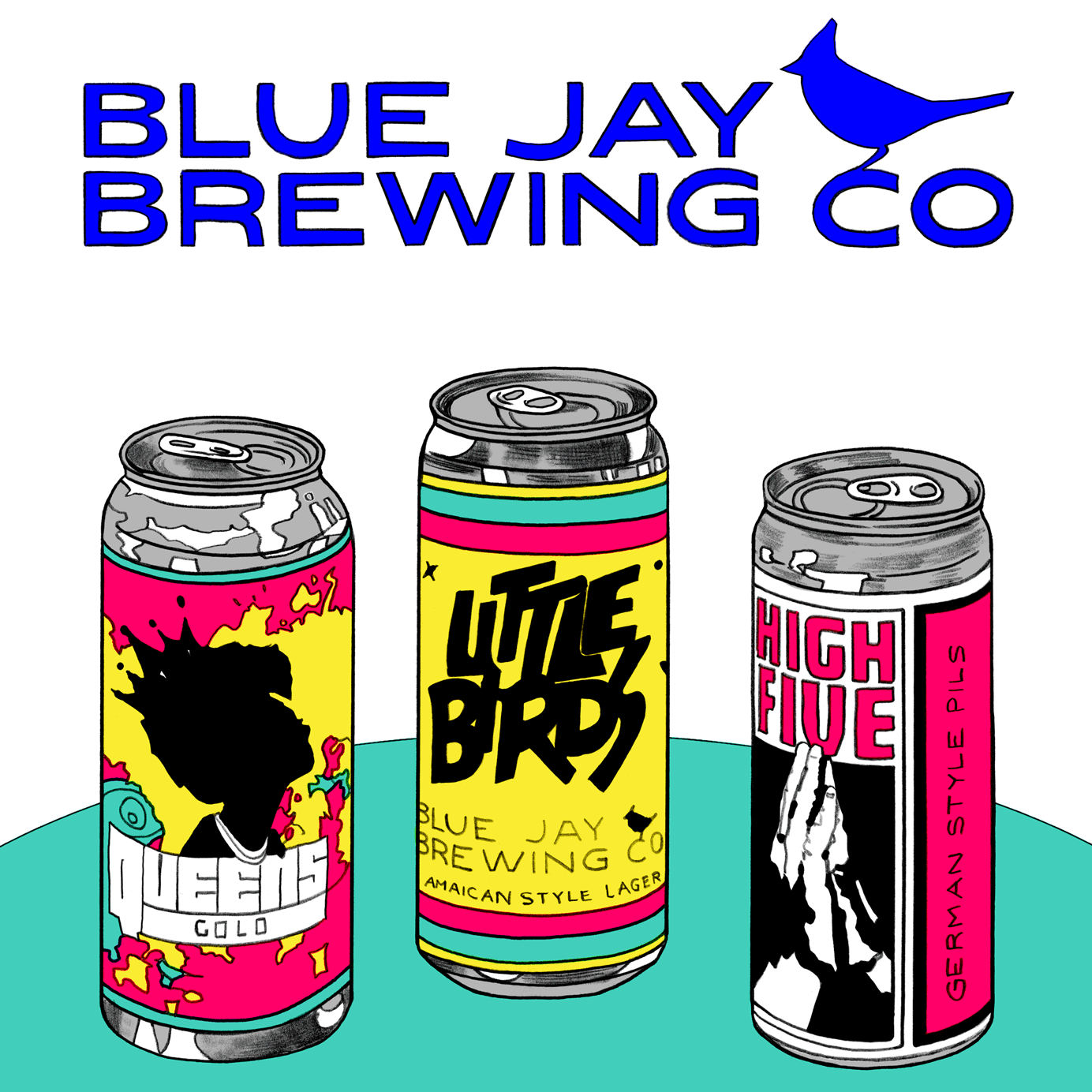Over the past few decades, the brewing industry has been defined by rampant innovation. The number of new substyles and pseudo-styles that have emerged from the dense thicket of breweries across the nation is head-spinning. In some respects, this evolution has been beautiful, but just like people, its growth hasn’t come without a few awkward stages. Smoothie sour ales brewed with marshmallows and five different tropical fruits? Quadruple IPAs? Many breweries are now even distilling spirits, making hard seltzers, and looking beyond brewing to keep themselves afloat and push the envelope. Every craft relies on experimentation for progress, but where do we go from here?
Jason, a.k.a. Jay and Nicole Thompson, the husband-and-wife team behind St. Louis’s Blue Jay Brewing Company, appear to have found an answer: returning to lager beer’s roots, and making the old feel new again.
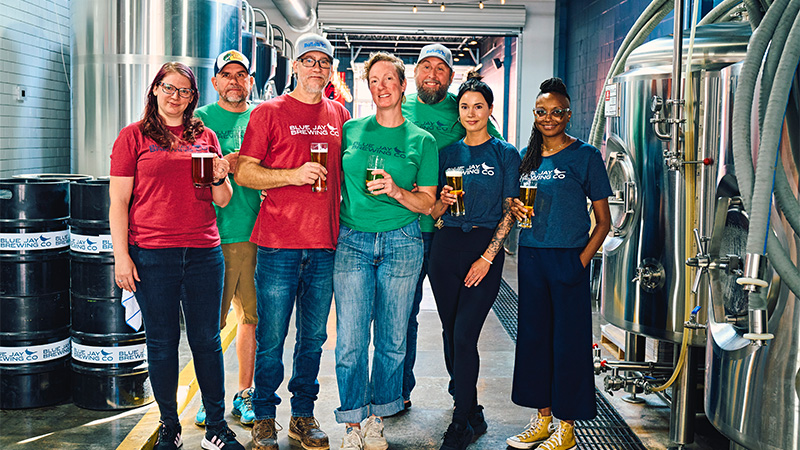
“In the last decade or more, craft beer was trying to get as far away from the Budweisers, Millers, and Coors of the world as possible,” co-founder and head brewer Jay says. “But those lagers are good, and you can sit down and have a few of them because they’re not crazy high in alcohol. Plus, growing up here in St. Louis with the Anheuser-Busch HQ nearby, lagers were everywhere.”
For 10-plus years, Jay brewed predominantly German-style lagers for brewery chain Gordon Biersch Brewing Company, working at locations in California and Maryland. After he and Nicole had children, they made the move back home to St. Louis in 2011 and started plotting to open a brewery of their own. However, money was tight, so to buy time, Jay picked up a brewing gig at the then-new Urban Chestnut Brewing Company while Nicole worked as a full-time yoga instructor. Years passed, and eventually the couple realized it was time to make the leap.
“Jay worked for Urban Chestnut right up until 2019,” Nicole says. “We decided that we need to really focus on getting our brewery open, or else we’d let it go, keep working, and let life go on.”
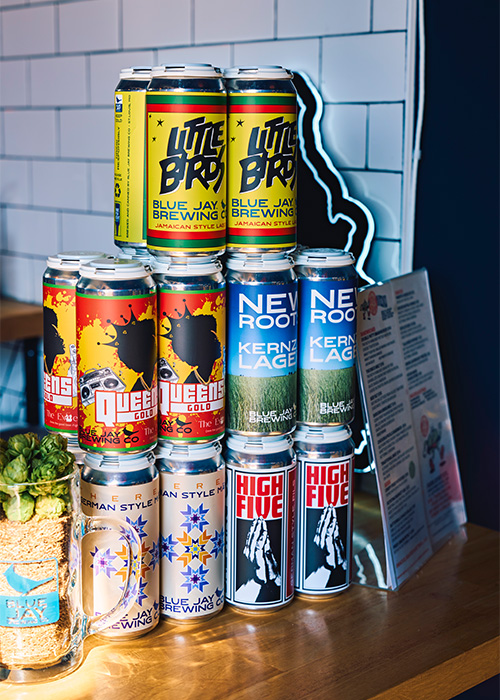
Then the pandemic hit, which turned out to be a blessing in disguise for the couple’s brewery dream. Day by day, they took baby steps toward establishing the business, getting various licenses, acquiring loans, and scoping out potential locations for the brewery. During that time, Jay and Nicole also decided on their soon-to-open brewery’s name. “We just kept seeing blue jays in our front yard, and Jason has gone by ‘Jay’ since he was a little kid,” Nicole explains. “One day he said, ‘What about Blue Jay?’ And the name stuck.”
By late 2023, the brewery was set up, Jay had eight different beers ready to pour, and Blue Jay Brewing opened its doors one December morning with a skeleton crew — just Jay and Nicole. We didn’t have any employees because we couldn’t afford to pay them at that point,” Nicole says. “We didn’t have any food, either. We just grabbed a few soft pretzels on our way into work.”
A few patrons strolled in, and over the next several days, traffic steadily increased. Now, almost two years since opening day, the couple tells us that the crowds keep coming back. They’ve partnered with nearby restaurant Farm Spirit to offer a full menu of bar bites, and Jay continues to work his magic in the brewhouse, using the knowledge he acquired at Gordon Biersch and Urban Chestnut to create lager recipes with specialty grains and malts while still abiding by regionally specific techniques.
Blue Jay Brewing Co. currently has five year-round offerings: a Märzen, dunkel, Jamaican lager, German pilsner, and a Bavarian hefeweizen. That’s four lagers and one ale.
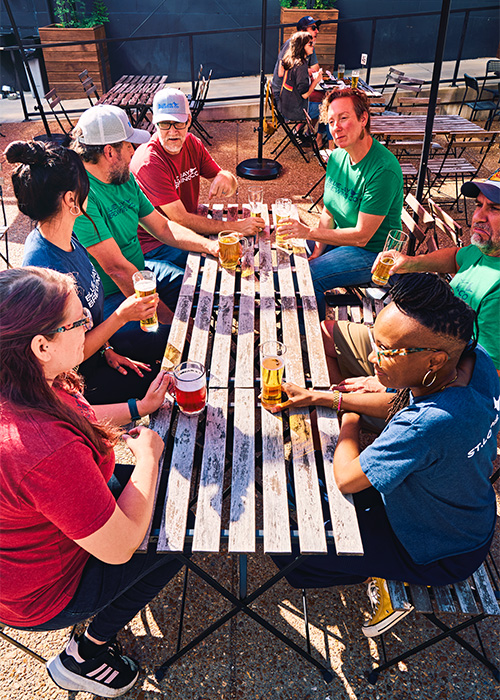
“Less people are drinking beer at the moment, but more people are drinking lager beer,” Jay says. “We felt that there was a hole in the market there, but truly it’s also what we always wanted to make anyway, so the timing really worked out.”
The remaining three draft lines are constantly rotating, and that’s where Jay gets to experiment. One of the more recent off-kilter brews was “Touch of Grey,” a purple-hued lager brewed with ube and maqui berry in collaboration with 2nd Shift Brewing. No extracts were used, as that’s where Jay draws the line. “It just always turns out better that way,” he says. “Touch of Grey was a fun one. We basically made mashed potatoes in the mash tun.”
In late 2024, Blue Jay Brewing unleashed another innovative offering that employed a perennial grain relatively new to the U.S. called Kernza. The American lager, dubbed “New Roots,” was brewed in collaboration with The Danforth Plant Science Center, The Land Institute, Millpond Brewing, Side Project Brewing and Switchgrass Spirits. “Kernza has a totally different flavor from barley,” Jay explains. “It’s got a high protein content and is a little hard to brew with, but it has this beautiful nutty, almost earthy flavor.” The couple says that it currently has a bock brewed with chanterelle mushrooms in the works. It’s all experimentation in the lager realm that pushes boundaries with intention — not pandering.
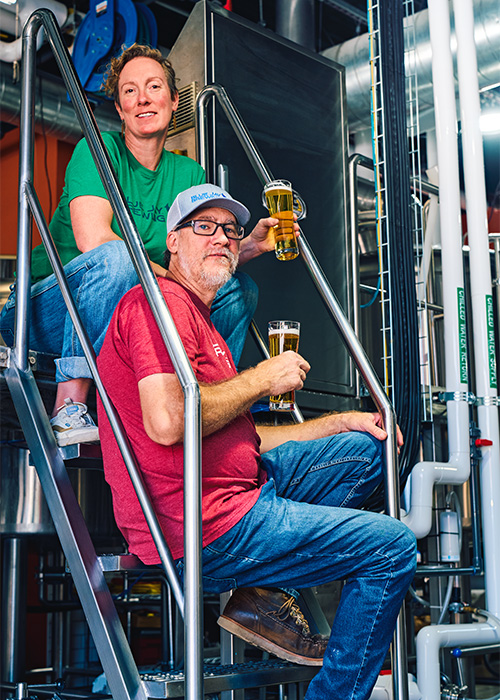
To this day, the brewery has yet to release a true-to-form IPA, yet one of its three rotating slots always goes to a hoppy beer. “What’s really fun is when people come in and say, ‘Where are your IPAs?’ At first, they think there’s nothing here for them,” Nicole says. “Then we’ll serve them a hoppy lager, and they leave thrilled with beers they never thought they’d like.”
Blue Jay Brewing Co. may still be in the salad days, but the Thompsons know that they want to keep the tap list capped at eight beers and maintain the brewery’s image as a simple neighborhood hang, but grow its reputation by consistently delivering on quality.
“We’ve got limited beers to choose from, which is actually very welcoming for a lot of people,” Nicole says. “Otherwise, it can be overwhelming. So we’ve tried to streamline, simplify, and just do a few things really well. I think that’s why people keep coming back.”
